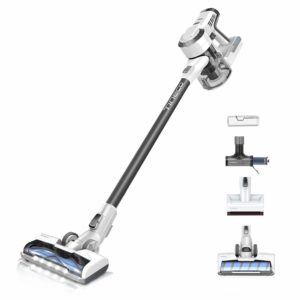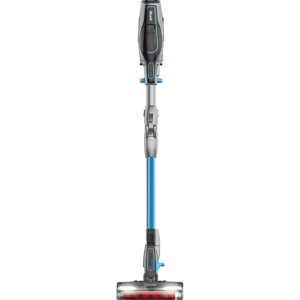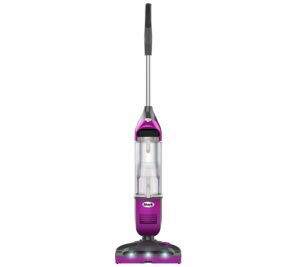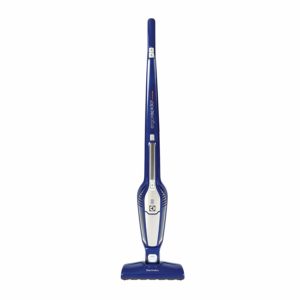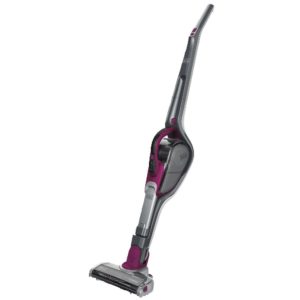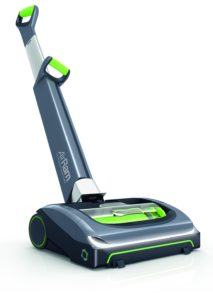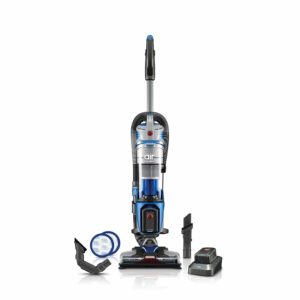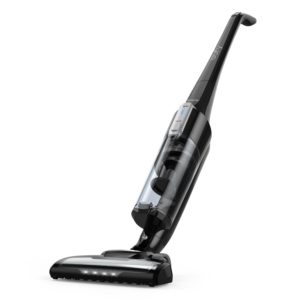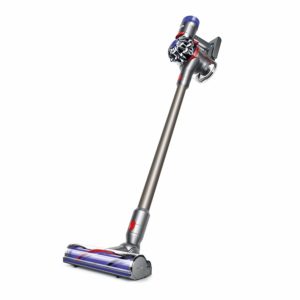Best Cordless Vacuum Buyer’s Guide
Of all the home appliances you may be considering for your home, a vacuum probably seems like the easiest to navigate. And while this might definitely be true, there are still some important things to consider before you purchase, especially since some vacuums cost hundreds of dollars. Below are the things that we found to be important when researching and writing this article. We hope the information will be helpful to you on your way to cleaner floors!
Corded vs. Cordless
You’ll notice that all the machines on the top ten list are cordless. For the sake of keeping the review focused, and because cordless vacuums seem to be the technological future for vacuuming, we decided to only include cordless models in our top ten list. The convenience of being cord-free can’t be denied!
No unwinding, plugging, replugging in each room, and rewinding the cord. No navigating around a cord when you’re trying to clean. There are very few downsides to choosing cordless other than the short battery life.
Battery
Most new models, including all of those on our best cordless vacuums list, use lithium ion batteries that both are powerful and have long run times.
You should consider how long it takes to charge the battery and the run time per charge. We include this information in our reviews.
Charging
One negative of having a cordless vacuum is that you need to charge your battery in between uses. Otherwise, you’ll find yourself with a mess and a vacuum that’s not functional.
Some vacuum batteries are charged in the vacuum itself with a cord attachment. Others are removable and charged separately. Some require that the whole vacuum be placed on a charging dock.
If you have a preference for how and where the battery is charged, then be sure to look for those details.
Vacuum Type
There are many types of vacuum cleaners. Here are the advantage and disadvantages of each type.
Upright
Upright vacuum cleaners are probably the most well-known. The popularity comes from their power and efficiency. They are generally user-friendly and functional on carpet and bare floors. They also tend to be a bit bulkier, which makes storage a bit of an issue for those living in tighter quarters.
Canister
Canister vacuums are smaller than the traditional upright, but a bit bulkier than stick vacuums (explained below).
Canister vacuums have nearly as much, if not as much, power as uprights while having a more slender frame. The separate canister design attached to a long wand works well on both carpets and floors.
These vacuums are a happy medium between the upright model and the stick model. Unfortunately, they tend to be the most expensive type of vacuum due to their newer technology and multi-functionality.
Stick
Stick vacuums were very aptly named. There design is basically a stick with a handle and a vacuum head. People choose them for the ultra compact design and ability to clean narrow and hard to reach places. However, they are generally much weaker than upright and canister vacuums.
We still found a great deal of sufficiently powerful stick vacuums despite their reputation. They are especially effective on hardwood floors, area rugs, and light carpeting.
Handheld
While not the best option for cleaning your entire house (as it would take hours), handheld vacuums are perfect for small, quick messes or hard-to-reach areas. They’re especially valuable for tight areas like your car or behind your couch.
You will find handheld vacuums on the market ranging in design, functionality, and price point.
2-in-1
Who doesn’t love a twofer?
Extreme value comes from purchasing a vacuum that functions in more than one way. One of those ways comes in the form of attachments, which we’ll get into more below. Another is when the vacuum actually converts from one form to another.
Half of the vacuums featured in our cordless vacuum reviews list are two-in-one. They function as a stick or upright and convert to a handheld or canister vacuum. We highly recommend purchasing a vacuum that offers this benefit!
Attachments
There is an endless list of attachments that might come with various vacuums. Below we include a few of the most popular that you may want with your vacuum purchase.
There may be an option to purchase one or more of these accessories separately. Just be sure that it is compatible with your particular vacuum.
Powered brush
Called different things by different manufacturers (e.g., Bissel’s TurboBrush, Shark’s Multi-tool), this attachment has an independent motor that powers a smaller brushroll.
This motorized brush head agitates the dirt and allows for a deeper clean. It has a smaller size, which allows it to reach in tighter spots. However, the smaller amount of bristles means it is not a suitable replacement for a normal brush.
Hard Floor tool
This attachment is designed specifically for use on hard, bare floors. It is wide and flat in shape with short bristles that aid in sweeping up dirt and debris.
Wheels make it easy to move along the floor. This attachment can sometimes be found with a small scalloped edge to be used to clean areas around seams. They’re great for dry messes on any bare floor: tiles, hardwood, laminate, concrete, linoleum, and so on.
Vacuum brush
This attachment is great on the sofa, drapes, and even carpets. It has a wide design with long, thin bristles. The bristles work to loosen any dirt, dust, or hair that has embedded into fabric.
We love this attachment to dust curtains or to get pet hair off of furniture.
Upholstery brush
The upholstery brush is even better suited for carpets than the vacuum brush. It is equipped with long brittle bristles that work the embedded dirt and debris out of carpet fibers. It is necessary for shampooing surfaces, as it will force the soap and cleaners into the furniture and carpets. The tough bristles will remove dirt, odor, and stains.
Crevice tool
The crevice tool is a hose attachment with a narrowed end that allows it to clean corners, tight areas, and baseboards. This tool works great on spots that a standard vacuum cleaner would miss.
Pet tool
This tool is essential for anyone with pets. You can even groom your dog or cat with this accessory and gather all the hair and fur that would have ended up on your floor, furniture, and clothes.
Bagged vs. Bagless
This is truly a matter of opinion. I have known an equal amount of people with strong opinions towards bagged and towards bagless vacuums. There are pros and cons to each, so consider them and decide which works better for your home and lifestyle.
Bagged-type vacuums tend to hold more dirt and keep it contained. When you replace the bag, the dirt and debris generally stays inside the bag. Less dust is released into the air. Generally, an indicator on the vacuum will tell you when to replace the bag. The downside being that you have to purchase new bags or your full-bagged vacuum will be rendered useless.
Bagless vacuums are generally more economical in that you won’t have to purchase any replacement bags. However, they use filters that need to be replaced or cleaned periodically.
These filters may be a positive because they actually filter the air as you vacuum. The main reason that people choose against bagless models is not wanting to deal with the dust and potential mess of emptying full bins. And this may be a real concern if you have asthma or allergies. Fortunately, most newer models have one-button, bottom release canisters that make emptying very hygienic.
Bagless seems to be the way of the future, so all of our cordless vacuums have a bagless design.
Warranty
The minimum warranty you should find with a good vacuum is a 1-year limited warranty. We have seen the warranty go as high as 5 years.
Keep in mind that you can sometimes purchase an additional warranty that goes above and beyond the standard warranty.










